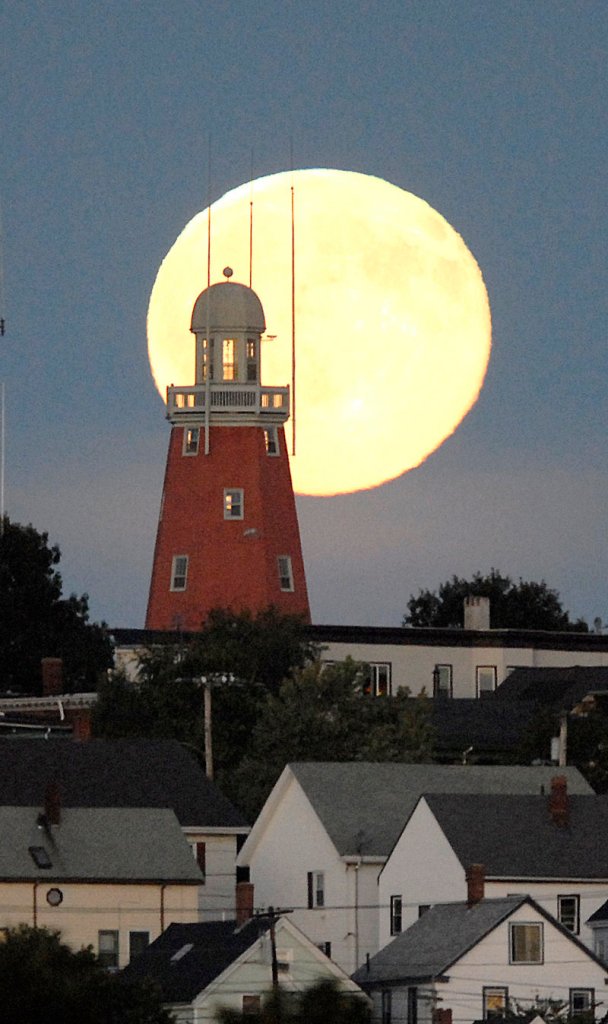For starters, it won’t be blue.
But it should be easy enough to see the blue moon anyway.
Friday night’s lunar appearance will be the second full moon this month. By tradition — some say of several centuries — this second full moon in a single calendar month is dubbed “blue.”
“The blue moon, huh. Very good,” mused Alan Davenport, director of the Maynard F. Jordan Planetarium at the University of Maine. “I hadn’t even noticed.”
Another definition holds that it is the third of four full moons in a single quarter-year. Regardless, its allure is that it’s “a statistical curiosity,” said Davenport. “It’s not an observational event,” which is to say that this full moon is likely to look pretty much like any other.
It’s not exactly rare; the blue moon occurs only once every 2½ to three years. One came around in 2007, another in 2010.
And now, tonight.
The description “blue” does not refer to color, Davenport said. The appearance of a hue in the moon is controlled by “atmospheric aerosols” — particles in Earth’s atmosphere.
“There’s a long history to the blue moon,” Davenport said.
It’s thought that a volcanic eruption or an intense, widespread forest fire could blow enough ash into the atmosphere to give the moon a bluish cast. Volcanoes more commonly produce “much redder and richer” color in the sunsets long after an eruption, he said.
Folklore, Davenport explained, for a long time held that the idea of the blue moon came from forest fires in North America that were so vast that they released enough particles into the atmosphere to make the moon seem blue in Europe.
But no one is expecting that kind of magic here.
“We let them go by,” Davenport said. “We don’t do bonfires or anything.”
Crooners have put their harmonies to the phenomenon. One of the more famous is “Blue Moon,” written by Richard Rodgers and Lorenz Hart in 1935 and recorded by The Marcels in 1961, which attributes a newfound love to the lunar spell.
Contemporary folk singer Nanci Griffith sang a melody tied more to a blue mood than the moon. “Once in a Very Blue Moon,” written by Patrick Alger and Eugene Levine and recorded in 1984 by Griffith, spins the lunar metaphor in a new way, depicting the abandoned lover trying to put a good face on a sad turn of heart:
I found your letter in my mailbox today You were just checkin’ if I was OK And if I miss you, well, you know what they say … Just once … in a very blue moon And I feel one comin’ on soon
Brighter moments are planned in Portland for this year’s skylight show. Amateur astronomers, stargazers and geocache adventurers will meet at the city’s Eastern Promenade from 6:30 to 7:30 p.m. to watch the moon rise. Meteorologists predict that a hot day, near 90 degrees, will give way to a balmy evening with temperatures in the low 60s.
And then there’s the matter of the lobsters.
The old saw among lobstermen that shedders follow the blue moon is impossible to prove. But, said Ernie Burgess of Chebeague Island, “the moon does affect production, that’s for sure.”
Shedders, he said, are more common in July, unless you’re talking this year, when they turned up in May.
But, should greater numbers be hauled after tonight’s blue moon, Burgess said, “the more the better.”
Staff Writer North Cairn can be contacted at 791-6325 or at:
ncairn@mainetoday.com
Send questions/comments to the editors.



Comments are no longer available on this story